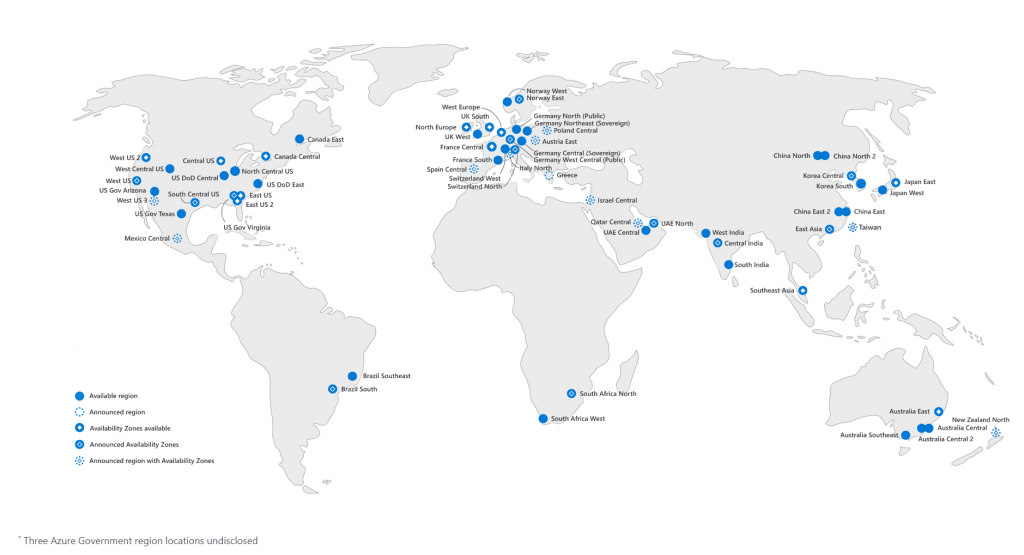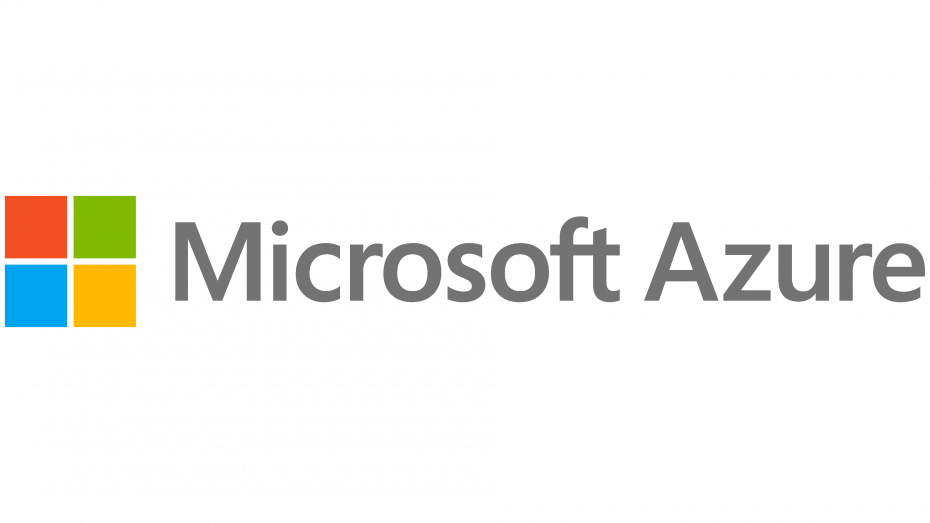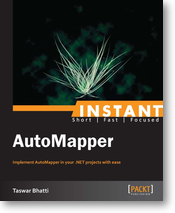What are Azure Regions
Let’s start with Regions, and what they are in Azure. Azure regions are geographic locations where Azure datacenters are located. Example: UAE Region, India Region, West US region etc etc.

azure_regions
Each region is made up of one or more datacenters that are in close proximity and connected with a low-latency network. Azure regions are grouped into geographies, which are areas of the world that contain two or more regions that are in close proximity and connected by a low-latency network. Azure Regions also consist of something special to Azure called Region pairs. Region pairs are two regions within the same geography that are paired together to provide disaster recovery protection for services that are deployed in those regions.
Think of this way there are usually 2 datacenter 300 miles apart, you as a customer only see’s Canada Central. Techincally there are 2 regions/data center there. When Azure updates any software, they first update on one data center and if everything works well then they update the second data center. The added benefit of this is that your data is automatically replicated to the other data center. Example: if you are running a Virtual Machine and Database they are auto backup to the other region and its free of charge, the customer does not see this. This is an added benefit of using Azure it defintely helps with resiliency of the Azure cloud, but you as a customer must also run your own backup stragedy. You will want to have full control of your backup stragedies e.g backup to the 2nd largest customers you have in another region.
I thought it was Availability Zone not Region Pair
Azure Availability zone should not be confused with Region Pair. Azure Availability Zones are unique physical locations within an Azure region. Each zone is made up of one or more datacenters that are in close proximity and connected with a low-latency network. Availability Zones allow customers to run mission-critical applications with high availability and low-latency replication of data between zones. By using Availability Zones, customers can protect applications and data from datacenter-level failures.

azure availability zone
While Region Pairs are internal to Azure, Availability zones are for you to design your own system of where you want your data and compute to be. Example: You may want to have your web server run in 2 different AZ (Availablity zone) just in case if something happens you still have one web server running while the other one is coming back online. But before we go future we need to define Azure Resources also.
What Are Azure Resources?

Azure Resources
Azure resources are pre-built software components that you can use to build Azure-based applications. These resources include virtual machines, storage accounts, databases, and more. With Azure resources, you don’t have to worry about building and deploying these components from scratch. Instead, you can simply use the resources that are already available in Azure to get started quickly and easily. If you think about resources they are basically at the lowest level of items you wish to create VM, Database etc etc.
Some resources are pay-as-you-go, meaning that you only pay for what you use. Others require an Azure subscription, which provides access to a larger range of resources and features.
How Can You Use Azure Resources to Build Better Applications?
In order to build better application, it is subjective to your own interpretation but here are some ways you can use Azure resources to improve your applications:
- Use Azure App Service to deploy and manage web applications.
- Use Azure Functions to create serverless applications that can scale automatically.
- Use Azure Cosmos DB to store and manage data for your applications.
- Use Azure DevOps to streamline your development process and automate deployment.
- Use Azure AI services to add intelligence to your applications.
- Use Azure Kubernetes Service to deploy and manage containerized applications.
- Use Azure Monitor to monitor the performance and availability of your applications.
By using Azure resources, you can simplify the process of building and deploying applications and focus more on developing the features and functionality that matter most to your users. Whether you’re building a small app for a single user or a complex system for a large organization, Azure resources can help you achieve your goals. Whether you are a seasoned developer or just starting out, Azure resources are a valuable tool that can help you build better applications more quickly and efficiently. Azure resources are a key part of the Azure platform that can greatly simplify the process of building and deploying applications. By using these resources, you’ll be able to focus more on developing the features and functionality that matter most to your users and less on the underlying infrastructure. So if you’re looking to build better applications with more efficiency and flexibility, be sure to take advantage of the available Azure resources.
Conclusion
We learned about Regions, AZ and Resources, in our next section we will go a level up and learn about Resource Groups, Subscription and Resource Managers. You can also watch the youtube video to learn more about Resources.



Leave A Comment